
 Flash News
Flash News
Theth action, resident in tears: I built on my land with my life's expenses, the state should not destroy it
Directors targeted! After Fier and Durrës, Rama arrives in Elbasan
Name/Identification of the 23-year-old found dead near Shkopet Lake
IKM action in Theth, residents come out in protest
Reported missing by his father, 23-year-old found dead near Shkopet lake

Alfred Lela
In the heated debate of the last few days about the Port of Durrës, the opposition and all the actors who oppose it, calling it an 'affair', focus almost exclusively on corruption, that is, theft of money, procedure, or (lack of) transparency of the public goods, material or virtual.
One thing, it seems to me, has been lost in all this belligerent targeting: corruption is not the problem. Beneath all that clearly looks like abuse and theft, lies an even more dangerous enemy than the misuse and embezzlement of public funds.
I am talking about the separation of the governed as an act of public good from governance as an act of the spectacular and elitist. Edi Rama constantly sinks into this second category and continues with an arrogance second to none on the continent. If Enver Hoxha had discovered the paradigm and totem of the "heavy industrialization of the country", which brought Albania out of communism embodied in Azem Hajdari's famous expression 'The metallurgical plant that cannot produce a beer bottle cap', Edi Rama has fallen prey of another fascination. He believes that only decoration, the myth of beauty, and the light industry of appearance, can save Albania.
If you analyze his public acts, they are all not for the state as guarantor of the public, but for the state as an act of creativity, the state of beauty. At the very beginning, he started with explosives against some buildings in Tirana and later against the property of the former leader of the opposition in Vlora. The problem in itself is not the controversial and public demolitions, but what follows the action. You don't need a party bias to understand that Mr. Rama uprooted some mushrooms of public abuse and planted hundreds more himself, turning them into symbols of his government. When you look around Tirana, you see towers that, for themselves and in relation to themselves, stand, but fall with a thud when you see them into the big panorama of the city. Tirana, as it is being outlined, is stuck in the world view of an impossible Las Vegas, from above, and some old Soviet town of the communist era.
Next comes this philosophy that fights the death of the author, but kills the city and the country. The last act, the Port of Durrës, is more than an act of corruption, it is a sign that Edi Rama and his government are disconnected from reality. Rama does not create communities, cities, and public spaces, but enclaves. These islands can be sometimes terrible, a kind of Gaza strip, and other times wonderful like a miniature Soho, but they are signs of an unstable development, of a whimsical government.
Even the port of Durrës is Rama's attempt (let's leave the corruption aside) to build a Potemkin village in Albania, i.e. a facade that covers reality, confuses you with the form, and hides the content.
But, not only that and much more than that, Edi Rama has turned into a repulsive prime minister, both for the opponents and for the people. What else is a megastructure designed entirely for living, entertainment, and recreation? Everything is for the rich and the crowd but nothing for the public. What category of the population does it target besides the 2 percent of the very rich? To take the country's largest port and dismantle it on the grounds of aesthetics and environmental pollution, while you are the biggest polluter of the environment yourself, allowing oil giants to sell substandard and manipulated fuel, is an open mockery.
People detect this by intuition or analysis. That is why so many Albanians flee and want to flee their homeland. They feel excluded in their own country.
Depopulation is a direct consequence of this way of governing, which has alienated the public discourse and enclaved the population, reducing, more and more, the middle class. Rama knows that the rich are easily caught because they don't want to lose their wealth, and the poor just as easily because they are pushed by impossibility. The only resistance remains the middle class, people who can live without the government.
Find this trace of struggle against the middle class in Rama's political activity or in his 'works'. Rama builds up or down, while in the middle he just shoots. Doesn't that explain the way he behaved with the University lecturers? Not that he helps the poor, but he fears their numbers and softens them, either by alms or by circus.
As for the rich, you can find his flirting with them in all residential areas, tourist villages, and closed communities, and, especially, surrendering to them almost all public superstructures of the country.
The port of Durrës is the last gauntlet that Edi Rama throws to the perverted public. The rich will own it, while the poor will enjoy being able to walk in it in the evenings and buy seeds or popcorn. This is a bitter irony of the man who spoke of the system that destroys the individual. The irony is that he became the very individual who created a system, built and inspired by rottenness.
The Port of Durrës may seek to be and even succeed in being a 'Manhattan' in itself, but in contrast to its own country and people, it will be no more than a facade along the Adriatic to hide the ugliness of the Swamp (an area in Durres), Golem and the entire skyline that they destroyed, the very ones who stuck a postcard of concrete and lights in the city that saw all civilizations and barbarians and collapsed in the hands of its won people.
Latest news

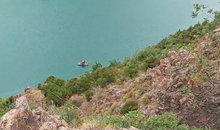
Found dead in Shkopet Lake, 23-year-old has injuries to his throat
2025-07-09 10:41:39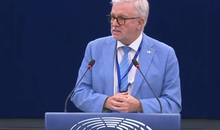
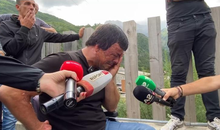

Hoxha: We will have a parliament that will surpass any comedy program!
2025-07-09 10:10:32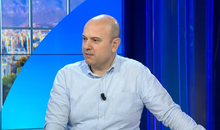

Directors targeted! After Fier and Durrës, Rama arrives in Elbasan
2025-07-09 09:53:57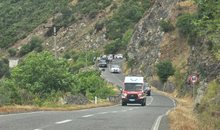
Name/Identification of the 23-year-old found dead near Shkopet Lake
2025-07-09 09:42:34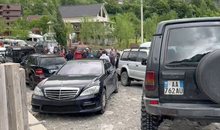
IKM action in Theth, residents come out in protest
2025-07-09 09:34:54
Reasons why the EU has not imposed new sanctions against Russia
2025-07-09 09:18:35
DW: Online scams increase human trafficking
2025-07-09 09:01:29

Reported missing by his father, 23-year-old found dead near Shkopet lake
2025-07-09 08:42:13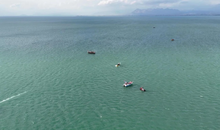
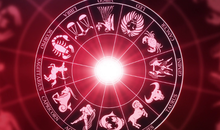
Horoscope, what do the stars have in store for you today?
2025-07-09 08:25:44
Sun and rain, Wednesday with unstable weather
2025-07-09 08:06:58
Posta e mëngjesit/ Me 2 rreshta: Çfarë pati rëndësi dje në Shqipëri
2025-07-09 07:52:02

Tabaku: Salianji bore a political cost that no one in Albania has borne
2025-07-08 22:36:15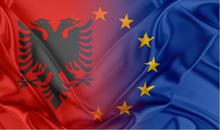


Sekretet për të shijuar verën si një ‘profesionist’
2025-07-08 21:45:06

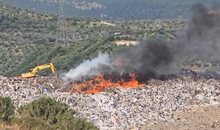
Albania's Waste Crisis: Toxic Smoke and Deep Governance Problems
2025-07-08 21:13:07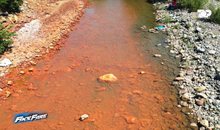
Alarming pollution in Fushë-Arrëz, copper factory waste turns the Fan River red
2025-07-08 21:07:14

Poll/ How do you assess the Prime Minister's intervention in local government?
2025-07-08 20:40:01
28 arrested in Italy and Spain for drug trafficking, including an Albanian
2025-07-08 20:24:14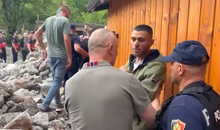
Residents clash with police in Theth: We are on our land
2025-07-08 20:11:41
Death of 27-year-old in Lipjan, Osmani: To be investigated independently!
2025-07-08 20:06:52
Trump promises US will send more weapons to Ukraine
2025-07-08 19:54:25

EU targets health, education, police and cadastre as areas of corruption
2025-07-08 19:23:34
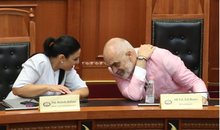
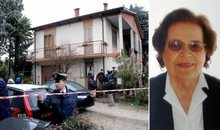


Salianji after his return: I did not oppose for functions, but for vocation
2025-07-08 18:23:15
Will he run in the 2029 elections? Here's how Salianji answers
2025-07-08 18:16:09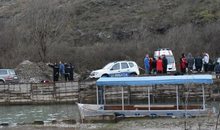
Boat captain drowns after diving into water to save two tourists in Shkodra
2025-07-08 18:05:12
Salianji from the DP headquarters: I brought a drug trafficker to justice
2025-07-08 18:03:26
After Fier, Rama "landes" in Durrës, dismissals expected
2025-07-08 17:53:32
Ervin Salianji arrives at the blue headquarters, welcomed by supporters
2025-07-08 17:45:12
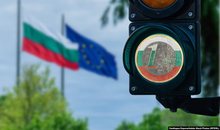
EU approves final steps for Bulgaria's Eurozone membership
2025-07-08 17:43:06

Zhupa after Salianj's release: Inspiration for every opposition member
2025-07-08 17:19:39
Actor David Killick passes away
2025-07-08 17:09:23



Threatened with dismissals, Rama arrives at the Fier municipality
2025-07-08 16:39:19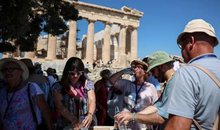
Extreme temperatures temporarily close Acropolis in Greece
2025-07-08 16:30:34

A plot of cannabis is discovered in Mazha, Kruja
2025-07-08 16:13:48

Republika Srpska allocates additional 22 million euros for lobbying in the US
2025-07-08 15:52:04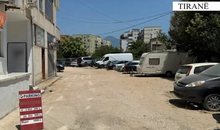

Spices that protect you from mosquitoes!
2025-07-08 15:30:03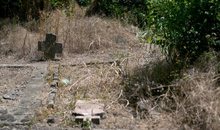

Accident on the Vlora-Qeparo axis, one injured
2025-07-08 15:11:52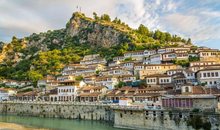
Berat, 17 years part of UNESCO's world heritage
2025-07-08 15:03:30
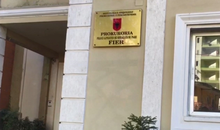

Cost of living increases, inflation rises to 2.4% in June, driven by food
2025-07-08 14:29:54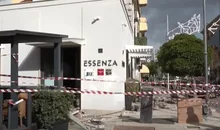
VIDEO/ Restaurant roof collapses in Italy, one victim and ten injured
2025-07-08 14:18:44
Requested release from cell, Supreme Court leaves Veliaj in prison
2025-07-08 14:07:41
TikTok shutdown/ Austrian media: Rama benefited politically from the app ban
2025-07-08 13:48:25
Acropolis temporarily closed due to heat
2025-07-08 13:31:09



Salianj's release/Berisha: He was politically condemned by Rama and Xhafa!
2025-07-08 13:00:13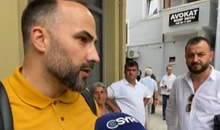

Knife attack on Peshkopia Boulevard
2025-07-08 12:44:10


Fier Court decides on the conditional release of Ervin Salianj
2025-07-08 12:15:23
Cost of living increases, inflation rises to 2.4% in June due to food
2025-07-08 12:00:16


Requesting conditional release, Ervin Salianji arrives at the Fier Court
2025-07-08 11:16:36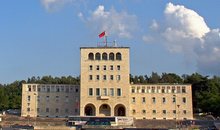
The first phase of university applications begins today
2025-07-08 11:10:52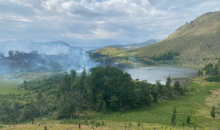
Fire in Lura, flames endanger the National Park
2025-07-08 10:53:43
Trump warns of 35% tariffs on Serbia and 30% on Bosnia and Herzegovina
2025-07-08 10:37:32
Thethi rooster and the dung cock
2025-07-08 10:24:01
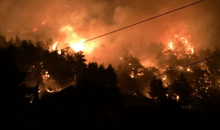
Fire in Dukat endangers Llogara National Park
2025-07-08 10:01:39
International drug search: 36-year-old arrested in Durrës (NAME)
2025-07-08 09:50:48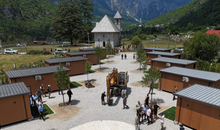
Thethi, tourists "criticize" modern trend
2025-07-08 09:39:54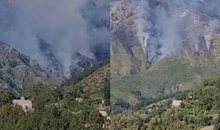
Fire on Mount Dukat still active, Llogara National Park at risk
2025-07-08 09:28:12
Veliaj's appeal to be heard today in the High Court
2025-07-08 09:16:02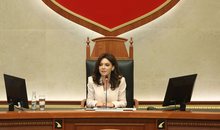
"Bad sign for democracy"/ Parliament neglects reporting by institutions
2025-07-08 09:04:56
Today's hearing at the Fier Court, Salianji requests conditional release
2025-07-08 08:56:39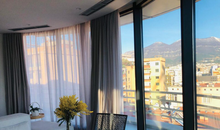
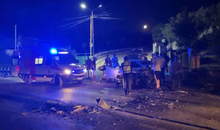
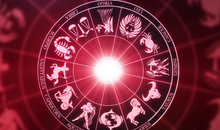
Horoscope, what do the stars have in store for you today?
2025-07-08 08:16:19
Weather forecast/ How temperatures will vary throughout the day
2025-07-08 08:02:37
